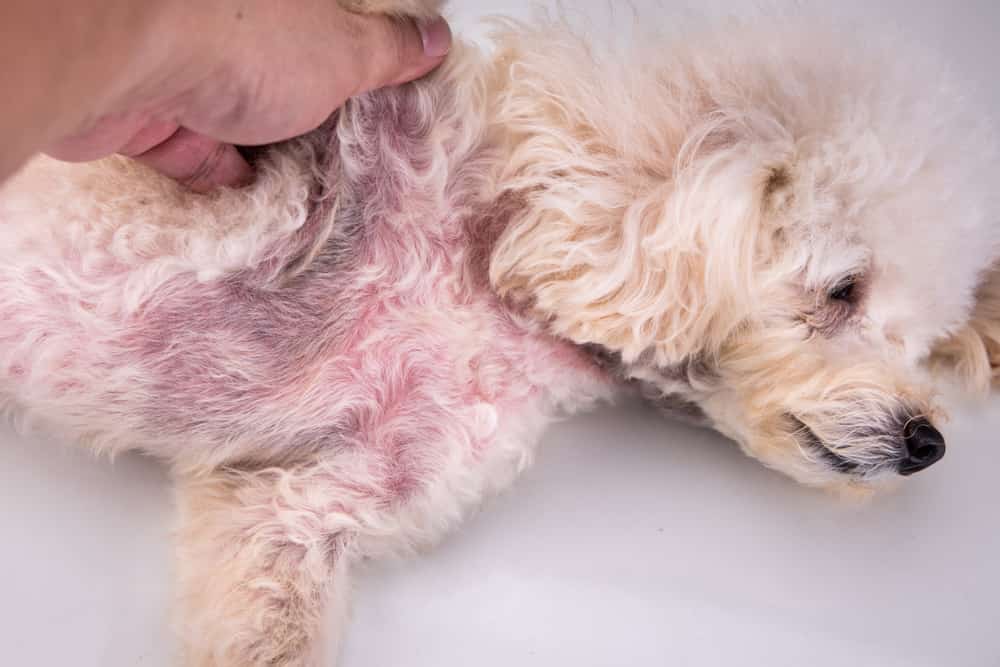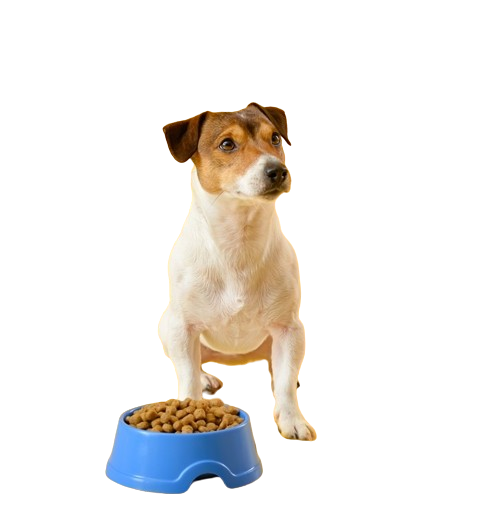I. Introduction: Yeast Infections in Dogs – A Cause for Concern
Imagine your furry friend constantly scratching their skin, their ears red and inflamed. This could be a sign of a yeast infection, a common issue for many dogs. Yeast, a type of fungus, naturally lives on your dog’s skin in small amounts. But sometimes, an imbalance occurs, and yeast overgrowth leads to infection.
This article will guide you through everything you need to know about yeast infections in dogs, including:
- What causes them
- How to identify the signs
- Treatment options, including dietary changes
- How to prevent future flare-ups
By understanding yeast infections and how to manage them, you can help your dog feel comfortable and itch-free.
Learn more about yeast infections in dogs from the PetMD website: Yeast Infections in Dogs – PetMD
II. What Causes Yeast Infections in Dogs?
Yeast infections in dogs aren’t caused by a single culprit, but rather a combination of factors that can disrupt the natural balance of yeast on your dog’s skin and in their ears. Let’s delve into some of the common causes:
- Dietary Factors: What your dog eats can significantly impact their yeast levels. Commercial dog foods often contain high amounts of carbohydrates, grains, and starches, which can create an ideal breeding ground for yeast overgrowth. Sugary treats can also contribute to the problem.
- Environmental Conditions: Warm, humid environments are prime real estate for yeast growth. If your dog spends a lot of time outdoors in hot, muggy weather, or lives in a constantly damp environment, they may be more prone to yeast infections. Poor hygiene can also play a role. Areas with skin folds, like around the face and legs, or floppy ears that don’t get dried properly after swimming or bathing can trap moisture and create a yeast haven.
- Underlying Health Issues: Sometimes, yeast infections can be a sign of an underlying health problem that weakens your dog’s immune system, making them more susceptible to yeast overgrowth. Conditions like allergies, hormonal imbalances, diabetes, and Cushing’s disease can all contribute to yeast infections.
By understanding these common causes, you can take steps to reduce your dog’s risk of developing a yeast infection. In the next section, we’ll explore the signs and symptoms of yeast infections in dogs so you can spot them early and get your pup the treatment they need.
III. Signs and Symptoms of Yeast Infections in Dogs
Knowing the warning signs of a yeast infection lets you act quickly and get your dog the help they need. Look out for these common symptoms:
A. Skin Problems
- Itching: Yeast infections make your dog extremely itchy. They may scratch, lick, or chew constantly at their skin.
- Redness: The affected skin often turns red or inflamed.
- Rashes: You might notice rashes or scaly skin patches.
- Paw licking: If paws are infected, your dog will lick them often.
B. Ear Problems
- Ear Infections: Yeast infections often attack the ears.
- Head Shaking: Your dog may shake their head often to try and get relief.
- Ear Odor: Infected ears may have a strong, musty smell.
C. Other Symptoms
- Lethargy: Yeast infections can make your dog feel tired.
- Weight Loss: Severe infections can affect appetite and lead to weight loss.
IV. Treatment Options for Yeast Infections in Dogs
Getting rid of a yeast infection and keeping it away involves a multipronged approach. Here’s what your vet might recommend:
A. Veterinary Diagnosis and Treatment Plan
- Importance of Consulting a Vet: A vet visit is crucial. They can confirm the yeast infection and pinpoint any underlying health issues that may be contributing to the problem. This helps determine the best treatment plan for your dog.
B. Medication
- Antifungal Medications: Topical creams, oral medications, or medicated shampoos containing antifungal ingredients often form the backbone of treatment. They work to actively eliminate the yeast overgrowth.
- Antihistamines: If the itching is intense, your vet may prescribe antihistamines to provide relief and prevent further skin damage from scratching.
C. Cleaning Solutions
- Medicated Shampoos: Formulated with antifungal and soothing ingredients, these shampoos help manage skin infections, reduce inflammation, and offer relief from itchiness.
- Ear Cleaning Solutions: To tackle ear infections, specialized ear cleaning solutions break up debris, flush out buildup, and combat the overgrowth of yeast.
D. Dietary Changes (Key Section)
- Importance of Diet: What your dog eats significantly impacts their susceptibility to yeast infections. Adjustments to their diet become a vital part of treatment and prevention.
- Low-Carbohydrate, High-Protein Diet: Reducing the intake of sugars and carbohydrates – the fuel for yeast – is essential. Opt for a high-quality dog food that focuses on protein from easily digestible sources.
- Probiotics and Fiber for Gut Health: Supporting a healthy balance of beneficial gut bacteria is important for a strong immune system. Probiotic supplements and fiber-rich foods can help.
- Potential Benefits of Certain Fruits and Vegetables: Some fruits like cranberries and blueberries contain compounds that may offer additional support in combating yeast infections.
- Avoiding Foods that Exacerbate Yeast Overgrowth: Steer clear of ingredients that feed yeast, such as grains, potatoes, and overly processed foods.
- Omega Fatty Acids: Omega-3 and Omega-6 fatty acids promote skin and coat health, creating a less hospitable environment for yeast.
V. Home Remedies for Yeast Infections in Dogs (Use with Caution)
While getting your dog to the vet is always the best first step, some home remedies may provide additional support alongside conventional treatment. Important: Always consult with your veterinarian before trying these, especially if your dog has any underlying health conditions.
- Diluted Vinegar Solution for Skin: Apple cider vinegar can help restore the natural pH balance of your dog’s skin. Dilute the vinegar with water (ask your vet for the right ratio to avoid irritation) and gently apply it to the affected areas with a cotton ball.
- Probiotic Supplements: Adding a dog-specific probiotic supplement may aid in restoring a balanced gut flora, helping to fight yeast overgrowth. Choose a reputable brand and talk to your vet about the right dosage.
Remember: Home remedies are often not strong enough to combat yeast infections on their own and should not replace veterinary treatment.
VI. Preventing Yeast Infections in Dogs
The best way to deal with yeast infections is to stop them from happening! Here’s how:
- Dietary Management: A healthy diet is one of the most important things you can do for your dog. Choose a low-carb, high-protein food and talk to your vet about probiotics and gut-healthy options.
- Maintaining a Clean and Dry Environment: Yeast loves warm, damp places. Dry your dog thoroughly after baths or swimming. Keep their living environment clean and well-ventilated. This is especially important for dogs with skin folds or floppy ears.
- Regular Grooming: Regular baths with a gentle dog shampoo and thorough brushing help keep your dog’s skin and coat healthy. This makes them less inviting to yeast.
- Managing Stress: Stress can weaken your dog’s immune system. Make sure they get plenty of exercise, playtime, and love to help them stay happy and healthy.
VII. Conclusion
Yeast infections can be uncomfortable for your dog, but they are treatable! Here’s what to remember:
- Consult Your Vet: Always start by taking your dog to the vet for diagnosis and a discussion of the best treatment options for their specific case.
- The Power of Prevention: A healthy diet, good hygiene, and a happy dog are the best ways to keep yeast infections at bay.
- You’re Not Alone: If your dog does get a yeast infection, don’t worry! With proper care and veterinary guidance, your furry friend will be back to their normal, itch-free self in no time.
Call to Action: Pay close attention to your dog’s skin and ears. If you notice any signs of irritation, scratching, or a foul odor, make an appointment with your vet right away.
Frequently Asked Questions About Yeast Infections in Dogs
- Q: Can yeast infections in dogs be contagious to other pets or humans?
- A: While yeast infections in dogs are typically not considered contagious to humans or other pets, certain underlying conditions contributing to yeast overgrowth may be transmissible. It’s essential to consult with a veterinarian for proper diagnosis and treatment.
- Q: How can I prevent yeast infections in my dog’s ears?
- A: To prevent yeast infections in your dog’s ears, regularly clean and inspect the ears for signs of buildup or infection. Keep the ears dry and well-ventilated, and avoid excessive moisture, which can create an environment conducive to yeast growth.
- Q: Are certain dog breeds more prone to yeast infections?
- A: While yeast infections can occur in dogs of any breed, certain breeds with floppy ears or skin folds, such as Bulldogs, Cocker Spaniels, and Basset Hounds, may be more predisposed to ear and skin yeast infections due to increased moisture and reduced airflow.
- Q: Can I use over-the-counter antifungal creams for my dog’s yeast infection?
- A: It’s crucial to consult with a veterinarian before using any over-the-counter antifungal creams or medications on your dog. Some human medications may not be safe or effective for dogs and could worsen the condition.
- Q: Are there any dietary supplements that can help prevent yeast infections in dogs?
- A: Certain dietary supplements, such as probiotics and omega-3 fatty acids, may help support the immune system and promote skin health, potentially reducing the risk of yeast infections in dogs. Consult with your veterinarian to determine the most suitable supplements for your dog.
- Q: Can stress contribute to yeast infections in dogs?
- A: Yes, stress and anxiety can weaken the immune system and contribute to yeast overgrowth in dogs. Providing a calm and stable environment, regular exercise, and positive reinforcement training techniques can help reduce stress and support overall well-being.
- Q: Is it safe to use vinegar to clean my dog’s ears as a preventive measure against yeast infections?
- A: Diluted vinegar solutions can be used safely to clean a dog’s ears, but it’s essential to use the correct dilution ratio and technique. Consult with your veterinarian for proper ear cleaning instructions and to ensure the safety and effectiveness of any home remedies.
- Q: Can yeast infections in dogs lead to more severe health issues if left untreated?
- A: Yes, untreated yeast infections in dogs can lead to secondary skin infections, chronic inflammation, and discomfort. In severe cases, yeast infections can compromise the immune system and contribute to systemic health issues. Prompt diagnosis and treatment are essential for optimal outcomes.
- Q: Are there any lifestyle changes I can make to help manage my dog’s chronic yeast infections?
- A: Lifestyle changes such as maintaining a clean living environment, providing a balanced diet, managing stress levels, and practicing regular grooming can help manage chronic yeast infections in dogs. Working closely with your veterinarian to develop a comprehensive treatment plan is key.
- Q: Can I prevent yeast infections in my dog by bathing them more frequently?
- A: While regular grooming and bathing are essential for maintaining skin and coat health, excessive bathing can strip the skin of its natural oils and disrupt the microbiome, potentially leading to an increased risk of yeast infections. Consult with your veterinarian to determine the appropriate bathing frequency for your dog’s specific needs.









